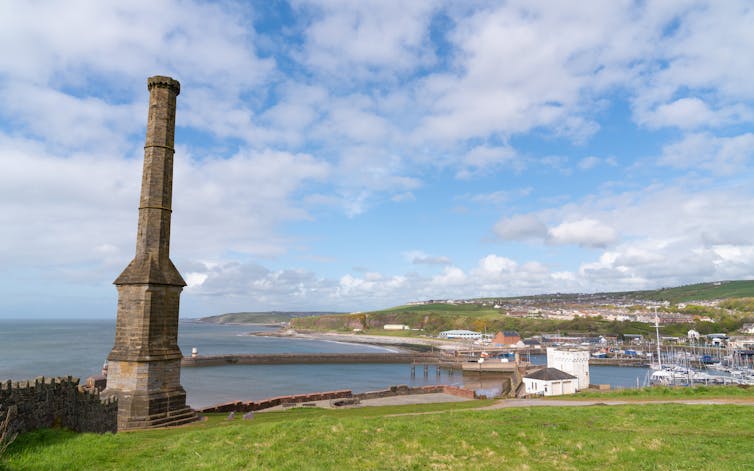Cumbria coal mine shows planning is the next battleground in UK climate policy
Gareth Fearn, University of Manchester and Pancho Lewis, Lancaster University
Last week the UK’s new Labour government made a bold decision. The new minister for local government, Angela Rayner, announced that the government would withdraw its support for a new coal mine near Whitehaven in Cumbria, which had been approved two years ago by the then Conservative government.
Rayner’s intervention follows a recent landmark Supreme Court ruling making it harder for new sites of fossil fuel extraction to be approved. Pointing to the implications of the court’s decision, she argued that there had been an “error in law” when Michael Gove, the minister at the time, had given the coal mine the go ahead in 2022.
The mine’s developers still want to go ahead, and a legal challenge by environmental campaigners is being heard in the High Court, with a ruling expected later this summer. But, with its decision to withdraw its defence, the government has confirmed that it understands the need to decisively turn away from new fossil fuel extraction. This is good news.
But to rise to the challenge, the government must do much more. It must now show it understands what it means to decisively put the UK on a path towards clean energy while still recognising the importance of economic and social justice.
One of Keir Starmer’s pledges prior to becoming prime minister was to reform planning. He used eye-catching language, promising to “bulldoze” the existing planning system to take out “nimbys” (those who say: “not in my back yard”) ostensibly standing in the way of progress.
In Cumbria, the nimbys have a point
But there is an unfortunate irony in how Starmer’s position relates to the Cumbria mine. In Cumbria the ostensible “blockers” were environmental campaigners pointing out that the mine would add 8.4 million tonnes of CO₂ into the atmosphere a year if it got the go ahead. They rightly argued that this would be indefensible in the middle of a climate crisis caused by greenhouse gas emissions. Without their intervention, the mine might already be in operation.
The planning system doesn’t need destroying, as Starmer’s language would suggest. As one of us (Gareth Fearn) recently argued, the challenge centres instead on revitalising planning as a public service, such that a new lease of life can be breathed into it.
In recent years, the UK’s planning system has been hollowed out due to austerity. Funding for local government fell by almost 50% and planning departments shrunk as their work was outsourced to private-sector consultants. Meanwhile, the amount of work these departments have been expected to do has, if anything, increased.
This is an untenable situation. To achieve a rapid, just transition the planning system needs to be properly supported so that it can proactively steer the net zero transition, and communities can have a real say on development in their areas.
The alternative is that local areas are left at the mercy of speculative developers who will invest in what is most profitable, rather than what most effectively meets public needs. In a context where green industry often offers less return on capital than fossil fuel sites or high-end real estate, a deregulatory approach risks forcing local areas to choose between high-carbon speculative development or no development at all, as had happened in Cumbria.
Green policies, resources and community power
We want to see Labour take three steps to get the country on the right path. First, the new government must draw a much clearer connection between decarbonisation and planning policy when it revises the national planning framework this summer. This would remove ambiguities about new fossil fuel extraction and would mean putting in place strong policies for new, green industries like the government has already done with onshore wind.
Second, Labour desperately needs to provide more resources to local government so councils and regional mayors can use in house planning expertise, rather than relying on expensive, private-sector consultants. This is at odds with chancellor Rachel Reeves’ approach, which seems to covertly embrace austerity and is reliant on the finance and preferences of the various banks and asset managers assembled to deliver infrastructure with little public control or ownership.

Charlesy / shutterstock
Third, and most importantly, communities need to be empowered to make genuine choices between alternatives. This is especially important for areas like Cumbria, with its long history of coal mining, or Aberdeen with its offshore oil, where green alternatives are as not as culturally embedded as carbon-intensive industries.
Coal in Cumbria has more than economic value. As one of us (Pancho Lewis) argued in recent research, coal is folded into the area’s history and continues to signal a desirable future for many people. This isn’t because people aren’t concerned about climate change. They are. It’s because coal is a familiar industry which delivered “proper”, reliable jobs in the past and, in the context of proposals for a new mine, promised to continue to do so in the years ahead.
The government must respond by working hand in glove with communities to shape a net zero future that is meaningful to them. This is about delivering reliable jobs that people need and rolling out industry which can provide continuity with the past. Doing this requires forward planning and creative thinking, so that the net zero transition wins hearts as much as minds.
The new Labour government’s decision to oppose the mine is good news. But for the energy transition to be successful there need to be opportunities in new industries around the country. This requires a public planning system which is back on its feet and for the public to have meaningful stakes in new projects from local to national government. Labour must rise to the moment.![]()
Gareth Fearn, Leverhulme Early Career Fellow, University of Manchester and Pancho Lewis, Researcher, Lancaster Environment Centre, Lancaster University
This article is republished from The Conversation under a Creative Commons license. Read the original article.







